The Brightest Light of Ruby Tuesday
The only Ruby Tuesday restaurant left in Illinois is off of Route 66 in downstate Litchfield. I’ve had the chicken and broccoli pasta a few times there over the past year. On every visit, I’ve paid a little more attention to the artwork. The walls contain restaurant themed paintings that recall Edward Hopper’s sparse realism.
On the north wall of the Ruby Tuesday, there is a giclee (inkjet printing process) of a waiter in a creased white shirt serving two men at a small table with a white tablecloth. A chef with a white toque stands in the background kitchen. Brown and bronze tones seem to be from an urban setting, certainly not from the farmland of Southern Illinois. The paintings of social connection depict a time not so long ago. The more I missed sitting down in restaurants, the more I thought of this artwork. I had to find out more about the artist.
At one time Ken Auster’s culinary pieces were in more than 900 Ruby Tuesdays across America and Canada. Ruby Tuesday filed for Chapter 11 bankruptcy protection last month because of COVID-related closures. About 250 company-owned and franchised restaurants remain.
Auster died in February 2016 from prostate cancer. He was 66 years old. He grew up in Southern California and fell two classes short of obtaining a bachelor’s in fine arts from Long Beach State. One of the two classes was art history. It was taught by a nun and most of the students walked out. Auster never looked back.
Auster began his career silk screening prints on T-shirts. Auster designed T-shirts for Van Halen’s 1980 and 1984 tours. He also designed rings for the band members Auster drifted into plein air (open-air) painting. This technique involves the representation of air and natural light qualities and/or by painting outdoors. He was an accomplished surfer and some of his work is part of the permanent collection of the International Surfing Museum in Huntington Beach, Ca.
His wife Paulette Auster runs the Ken Auster Studio in Laguna Beach, Ca. The Ruby Tuesday commissions came through Jack Morris, who owned an art gallery in Hilton Head, S.C. Morris knew Ruby Tuesday founder Sandy Beall III. “Sandy was blown away by Ken’s work,” Morris said earlier this week in a phone conversation. “On the first go-around he bought eight of Auster’s paintings. They were all restaurant themed paintings. There may have been a New York-themed street scene in there.”
Beall left Ruby Tuesday in 2012 and in 2018 the company went private through a $146 million deal. I found Beall. He explained the attraction to Auster’s work in an e-mail: “It was real-life restaurant people doing what we do every day for thousands of millions of guests. The settings were real and the colors were authentic, also in that there was color but it didn’t compete with the scene, setting or the person.”
Auster once explained, “I’m interested in the light and shadows created by the working chefs and it allows me to add a storyline to the scene. And restaurants tend to conjure up memorable times!”
Beall created Ruby Tuesday in 1972 while a student at the University of Tennessee in Knoxville. He said his first location was decorated with four large paintings of women’s faces in red overtones, which is how he came up with the name Ruby. “Tuesday was no great story, but I’m sure it was subconsciously from the Stones song,” he wrote.
Beall never had any legal issues with the Rolling Stones and their 1967 hit “Ruby Tuesday.” “Mick Jagger has been in locations twice,” he wrote. “After one late night show when asked about the biggest regret of his life, he said it was not investing in Ruby Tuesday.”
Auster was thrilled with his art being in Ruby Tuesday. Morris said, “He liked the idea that he was sharing his work with thousands of people as opposed to hundreds of people visiting art galleries and museums. He liked that it wasn’t typical of a restaurant environment.”
Edward Hopper was one of Auster’s favorite artists. “Particularly the landscape paintings,” Paulette said in an engaging conversation last week. “Ken came from a silkscreen background. He learned to simplify shapes. That’s what he loved about Hopper, how Hopper used positive and negative space.”
Morris heard the Hopper comparisons in his gallery. “And there was an impressionist feel like Childe Hassam’s (1918) Flags, Fifth Avenue,” he said. “Ken could go into an environment like a street scene with grays and blues, take the sunny side of composition and give it some yellow or orange. If you looked at the painting you would swear that color was there.” Auster also liked the Matson (cruise) Line South Pacific images made famous by Indiana born artist/muralist Eugene Savage.
Several of Auster’s culinary pieces reflected his favorite Northern California restaurants. “We would go to San Francisco every year just before Christmas,” Paulette said. They liked the Elite Cafe (in San Francisco, closed in 2019), Tadich Grill (the third oldest restaurant in the United States). One time Auster took a photo of a waiter at the late great Johnny Rockets diner on Fillmore Street in San Francisco and dropped in a Gauguniesque painting in the background.
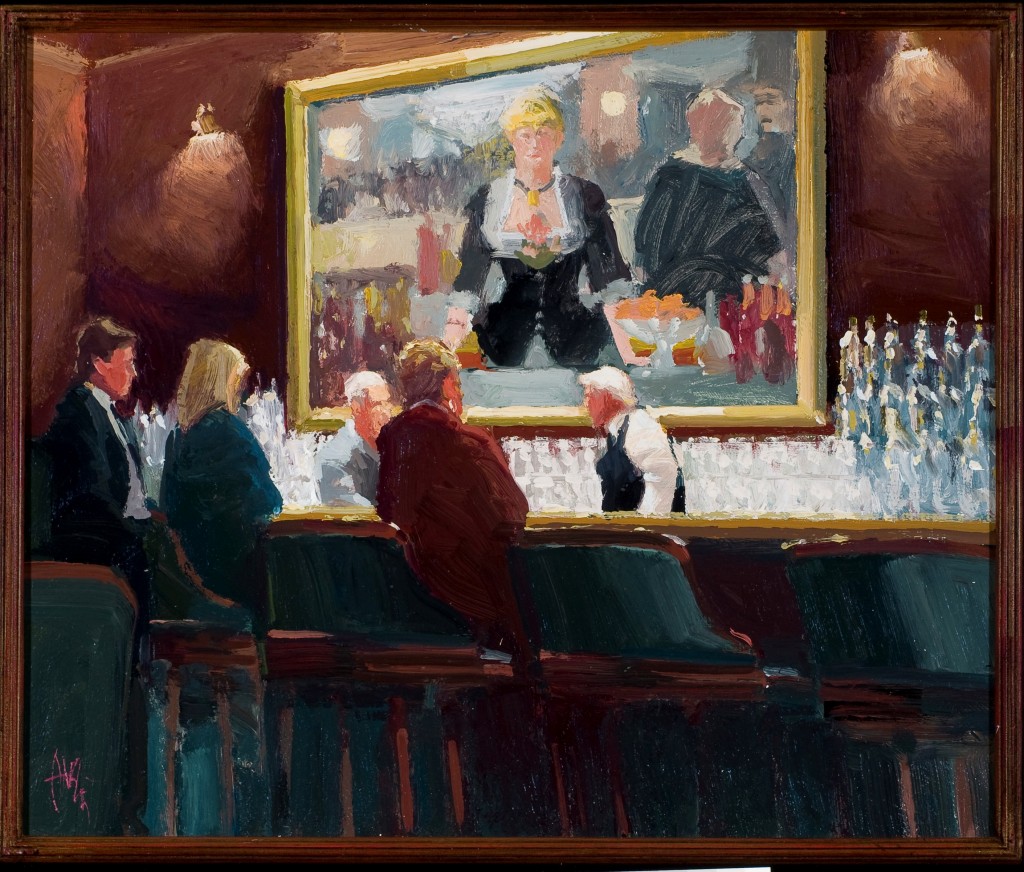
“St. Paulie Girl,” by Ken Auster; site either King Cole Bar in NYC or Maxfield’s Bar at the Palace in San Francisco (Courtesy of Jack Morris.)
“We’d take pictures and drive around the city,” she said. “Ken loved painting cities. He loved the hills and tall buildings in San Francisco. Another time we went to the wine country and went to the Culinary Institute of America. He started an entire chef series. He always worked with Thomas Reynolds (owner of the Thomas Reynolds Gallery in San Francisco) to come with themes for his shows.”
Did the Austers ever go to Ruby Tuesday?
“Yes, and it was fun,” Paulette answered with a smile in her voice. “It was nice to see his work in the space. So many people would contact us saying they saw his work in the Ruby Tuesdays. They have great food, too. Ken loved hamburgers and French Fries so it was perfect. The first one we went to was in North Carolina.”
Auster liked to surf at Trestles, the San Clemente beach that is name-checked in the Beach Boys hit “Surfin’ U.S.A.” Auster put himself through school by silk screening tee shirts for bars in the Belmont Shore neighborhood of Long Beach, Ca. That developed into his California T-Shirts company that included 18 retail stores including one in Japan. He designed for major surf shops in America and Europe.
In the late 1970s a woman from the Van Halen camp contacted Auster because she did not know how to screenprint on black shirts. Auster knew how to do the separations. “After he did the first shirt they hired him to do multiple designs,” Paulette said. “Then he designed in a world tour ring in 1983. That’s when I met Ken.”
In 1983 Auster met Paulette at a jewelry storefront store in Laguna Beach. He then asked Paulette to work his booth at the Sawdust Art Festival in Laguna Beach while he traveled to Oklahoma to deliver his world tour rings to Van Halen.
When Auster returned to Laguna Beach he asked her out. Their first date was on Paulette’s birthday at Disneyland in Anaheim, Ca.. They ended the night dancing to “Happy Birthday” at the Disneyland Hotel because Auster snuck the request to the bandleader. He immediately fell in love. Auster was a true romantic. He was a fan of the Neil Young hit “Cinnamon Girl” because it was playing on the radio when he met Paulette.
After 18 years and ten months of Auster pestering Paulette to marry him she finally agreed. “I had been married before and I didn’t want to fail,” she said. “And he was going through a divorce and I thought he would be going through all these changes. But he was just the same old guy. We kept going back and forth.” On May 26, 2003, they were married in a home overlooking the Pacific Ocean in Santa Barbara, Ca. The union was witnessed by three friends and their dog Mele, a Corgi Shepherd mix.
Auster’s sense of humor helped shape the good nature of his art. “Ken never named his painting what it was,” Paulette said. “Because Steve Pezman, who was publisher of ‘The Surfer’s Journal’ said, ‘You never say ‘Surfer going left, surfer going right.’ So for the Culinary Institute of America, he might name it ‘CIA Agent.’ When he taught, he was a jokester. He would do a workshop in his studio. After lunch he’d stick a plastic cup under his armpit. He’d be demonstrating and talking and to wake up the people he would pretend he was cracking his neck. Then he’d squeeze the plastic cup in his armpit. And everybody would go, ‘ooooooh!’ thinking that his neck was cracking.” Auster’s go-to palette was an old ironing board.
Morris added, “Ken was spontaneous. He wanted that spontaneity from his students when he taught workshops. But he lived that way. He was full of energy and excitement.”

Ken and Paulette at Crystal Cove State Park, 1996. Each of them bought the other an easel for Christmas without the other knowing. (Courtesy of Paulette Auster.)
Paulette was born in Los Angeles and raised near Dana Point. Her mother Paula Coit was an artist and her father was jazz drummer Rags Martinson who played the Barefoot Room in Laguna Beach in the 1950s, Trader Vic’s, and many other Orange County clubs. Paulette obtained a bachelor’s of fine arts in illustration at ArtCenter College of Design in Pasadena.
During these dark times, Paulette is always surrounded by Auster’s bright work at her gallery. There are posters, original art, paintings, digital prints, easels, and paint. “I love all this,” she said. “Ken was highly respected by his peers. He was so creative and unorthodox in how he thought. He could make a trash can look beautiful.”

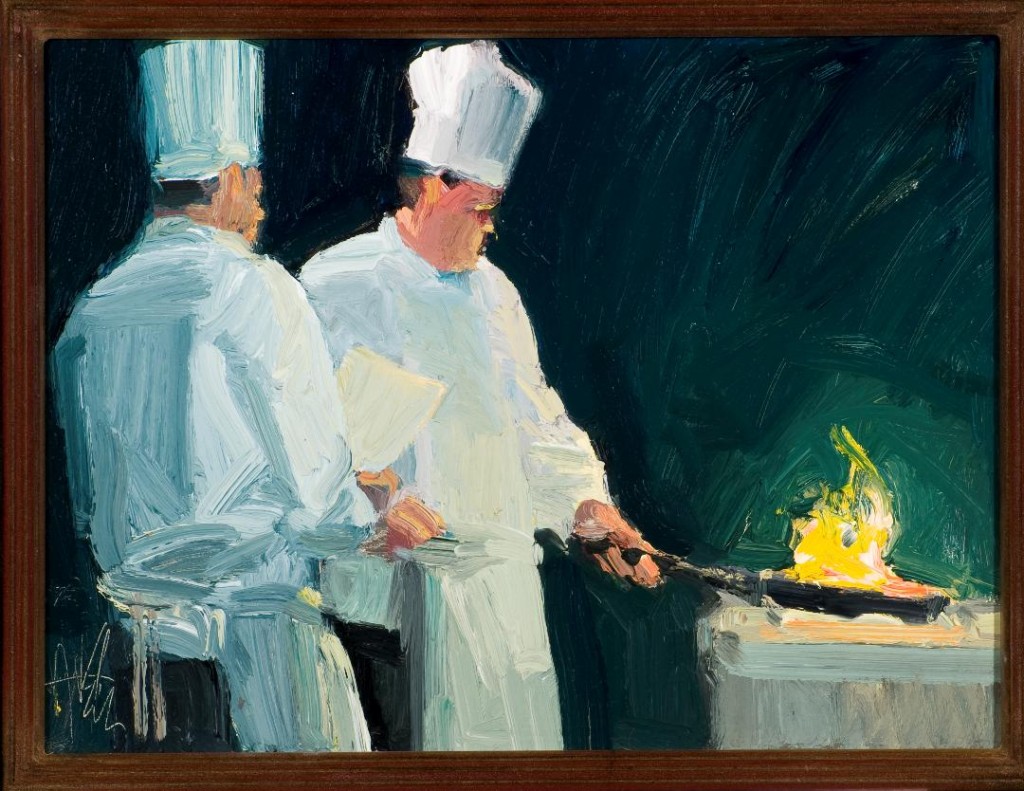
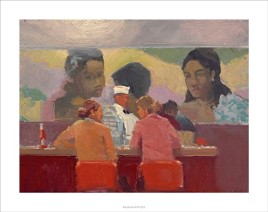
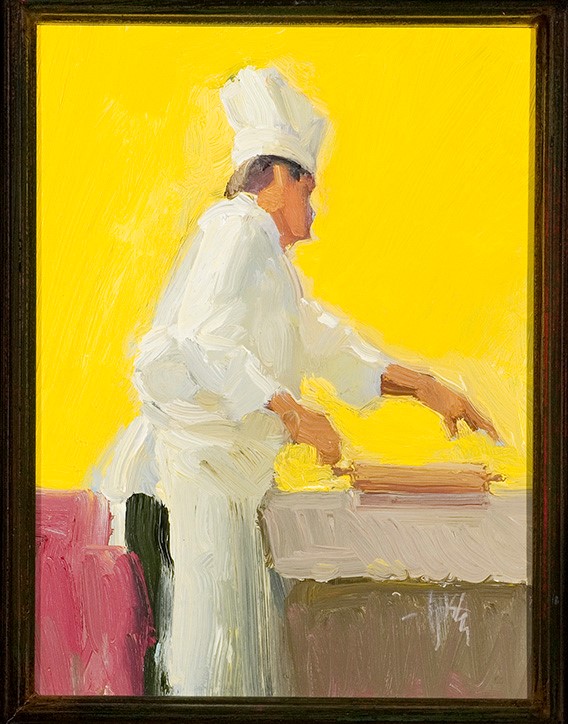
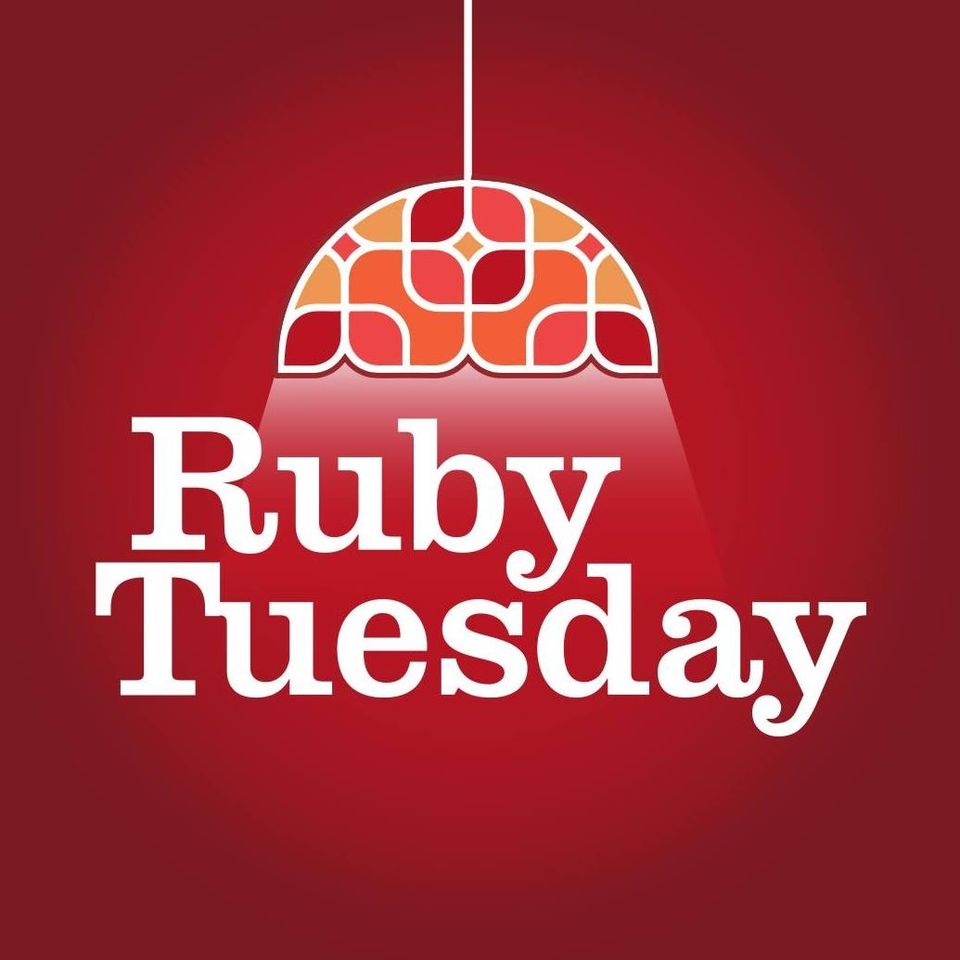
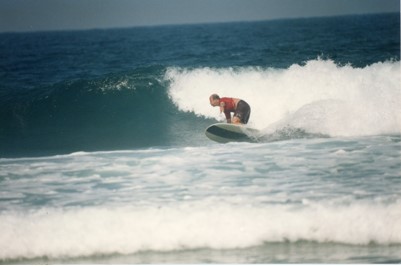
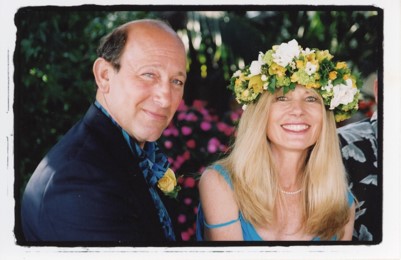
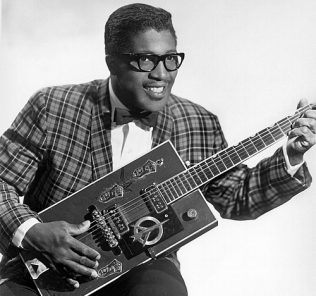
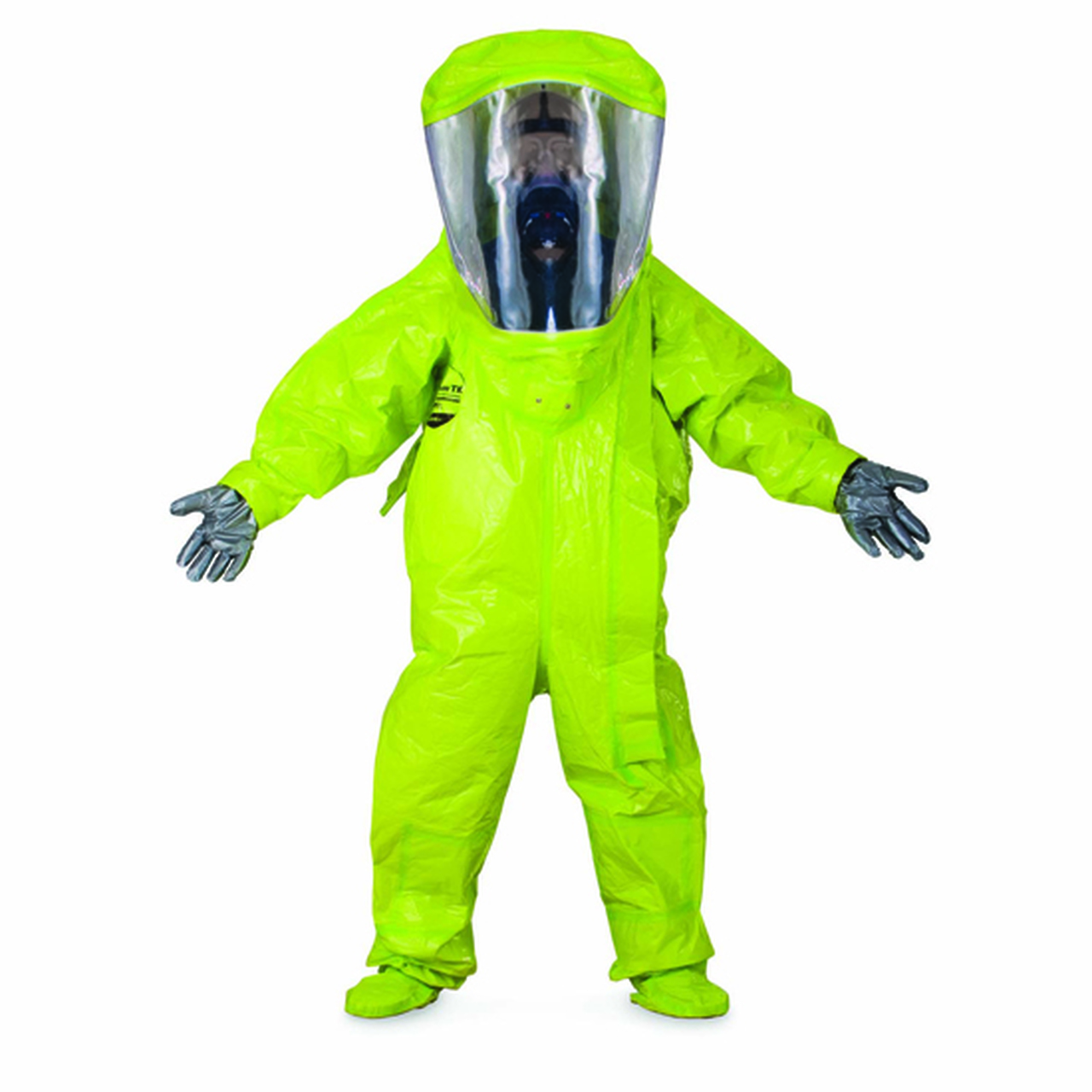
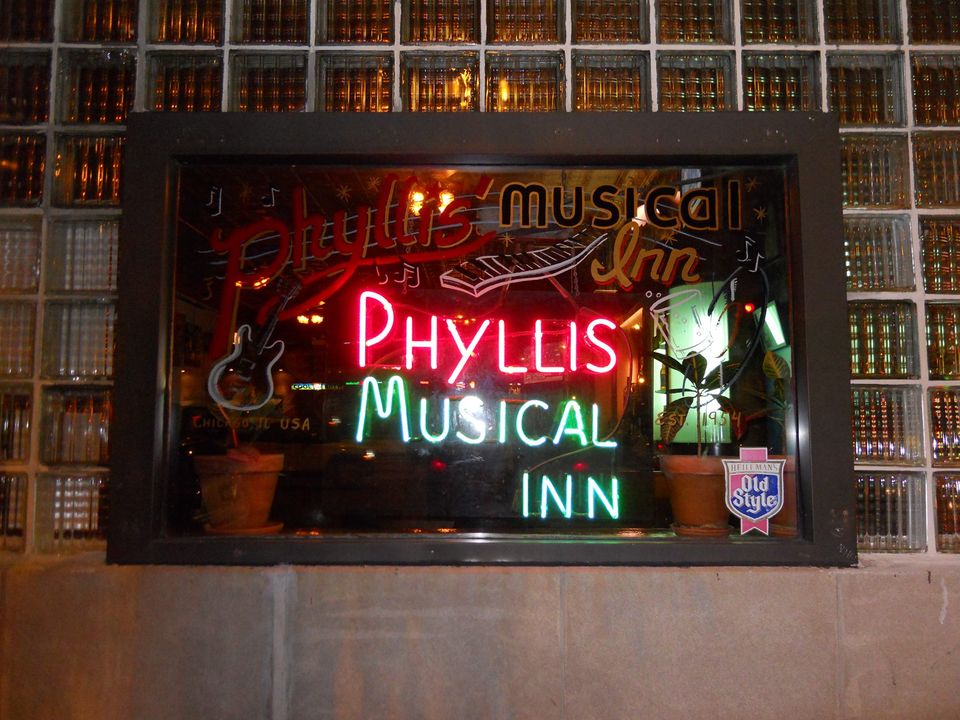
The Ariston Cafe ..Litchfield..Our family would stop there on way to our cousins in St. louis..since 1958..a classic.
Same family..
Thanks Tim! I will be giving you a call soon; that is my exact same order at Feed; chicken, mashed potatoes and spinach. Cheers!